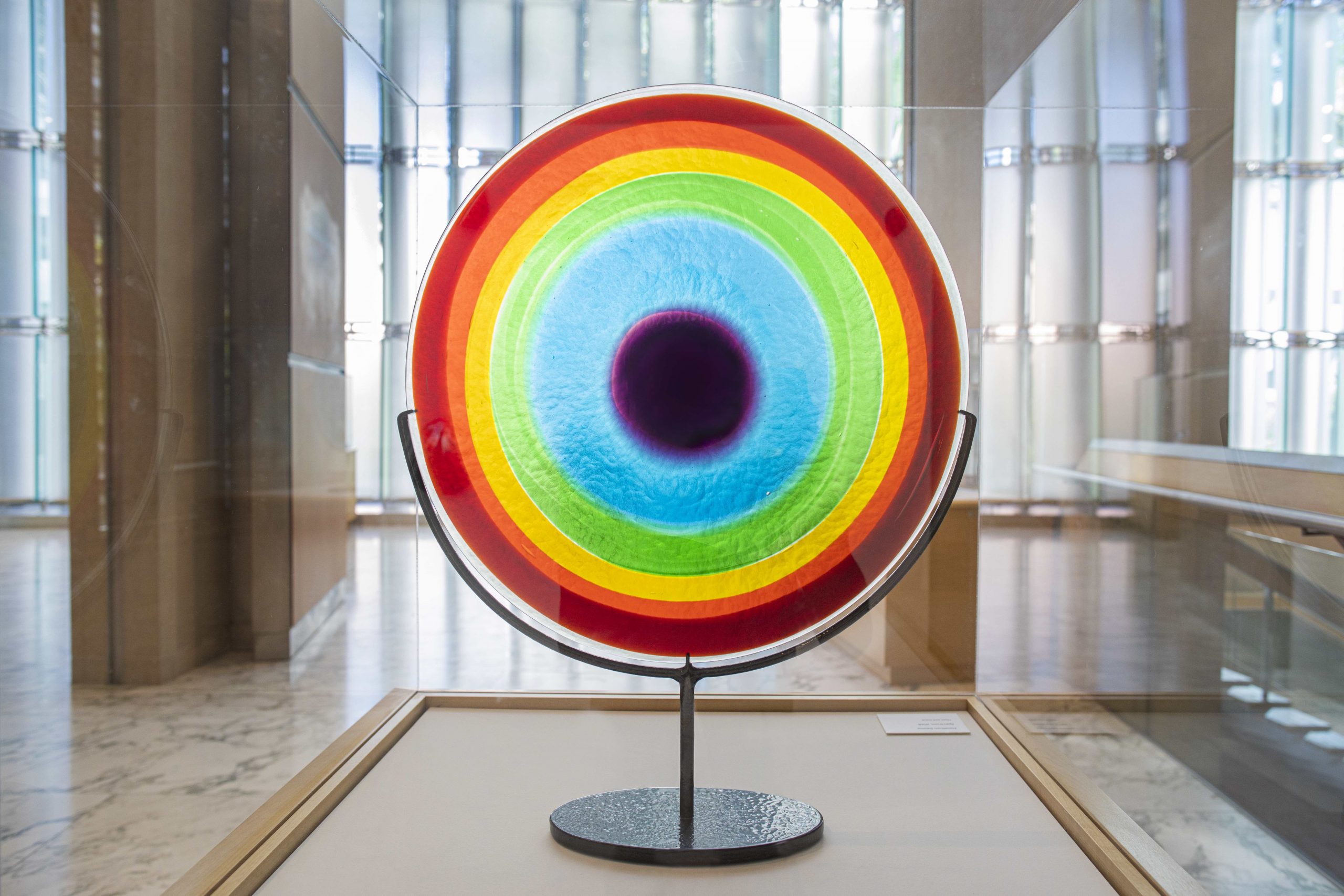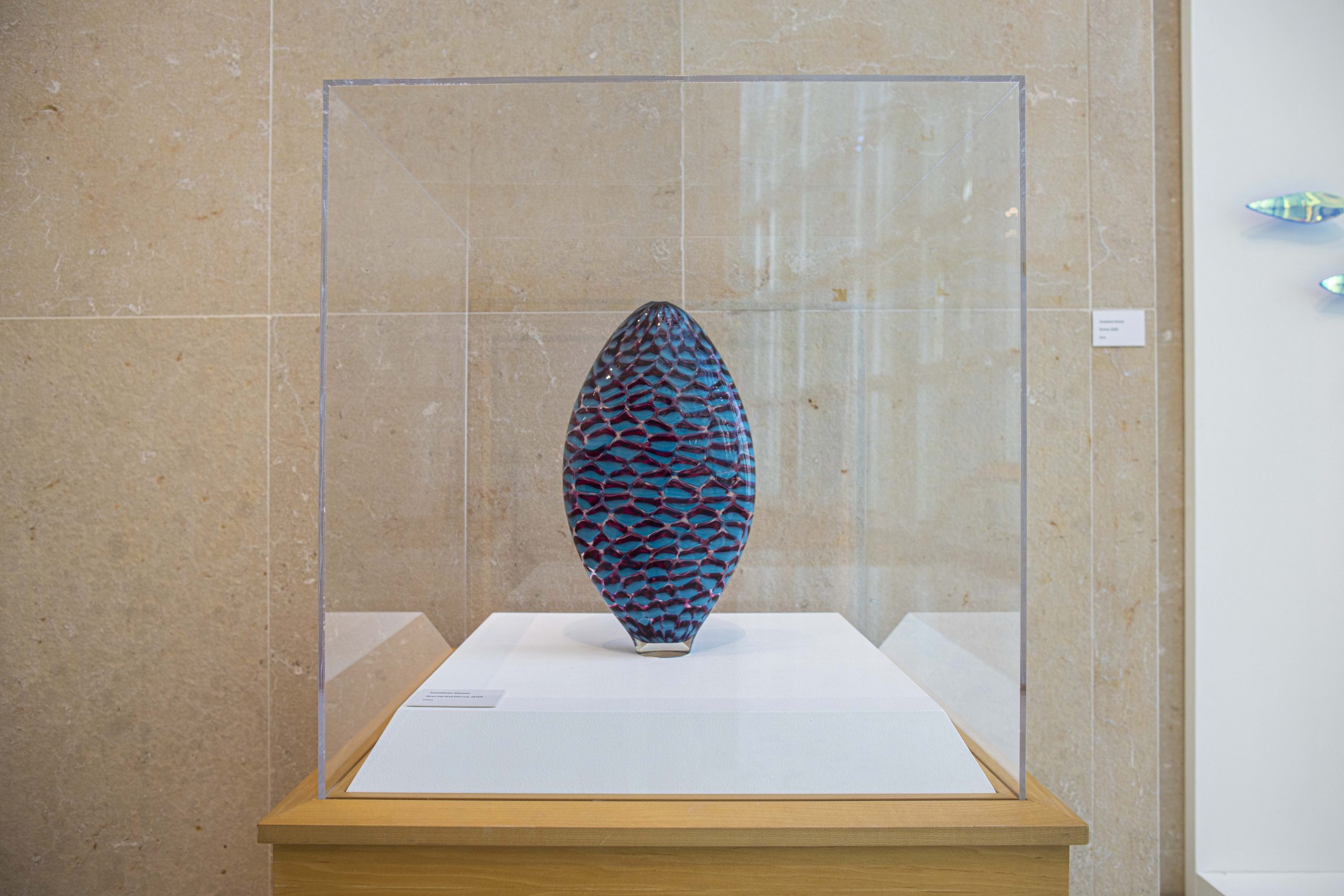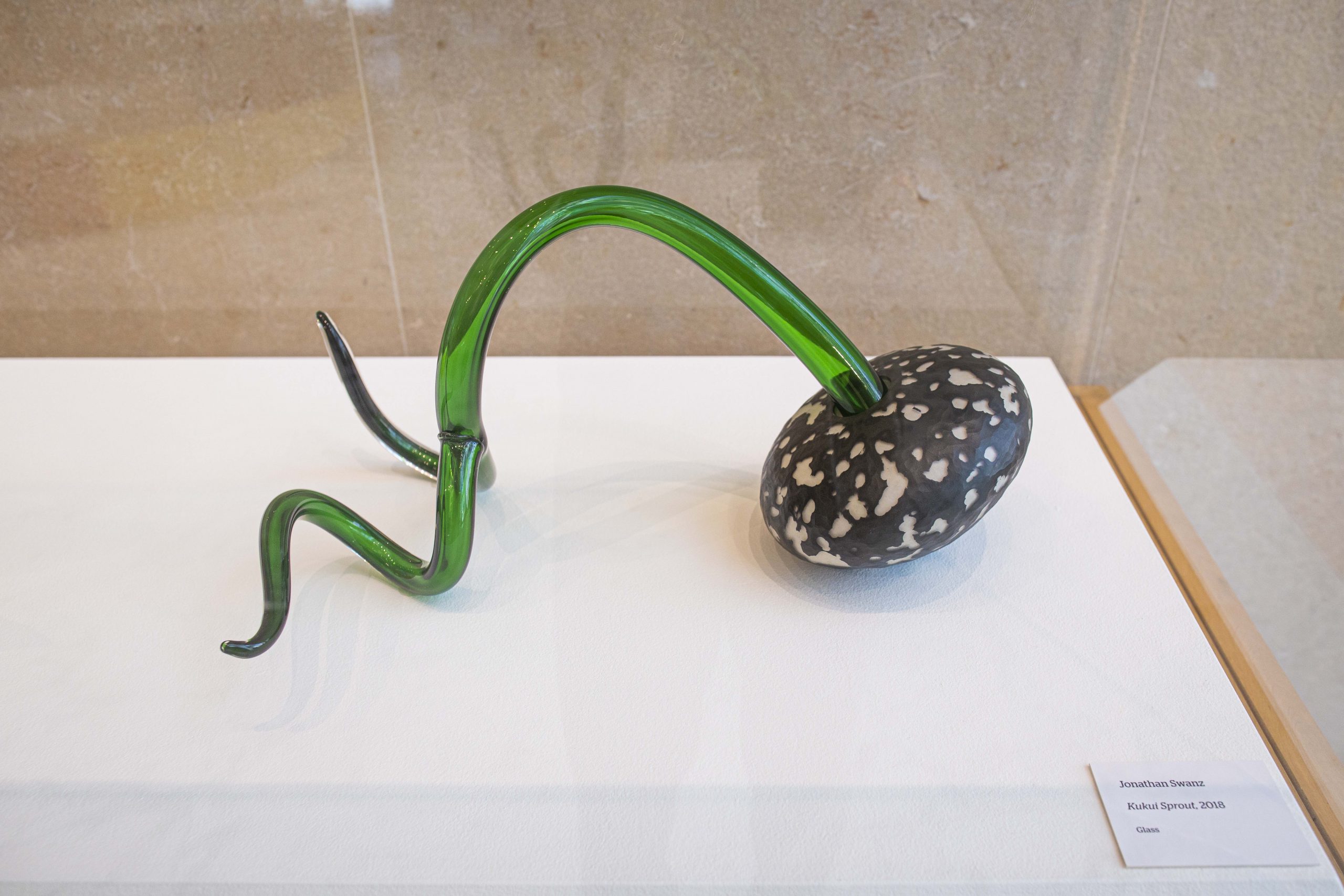Investigating "Parallel" with HoMA First Hawaiian Center artist Jonathan Swanz
Three new exhibitions featuring locally-based artists opened at HoMA First Hawaiian Center in November. Paintings by Tom Walker, glass sculpture by Jonathan Swanz, and a group exhibition of mixed-media drawings are currently on view during banking hours. This is the first in a series of blog posts exploring each exhibition. In this installation, HoMA’s Assistant Curator of Contemporary Art Katherine Love catches up with glass artist Jonathan Swanz, who is currently at work on a commission project in Louisville, Kentucky.
Inspired by the historic tradition of glass craft, as well as by modern and contemporary painting and sculpture, artist Jonathan Swanz is well versed in a variety of media and techniques including glass blowing, casting, carving, and sculpting. His education includes Bachelor of Arts degrees in studio art and philosophy from Centre College, Danville, Kentucky, and a Master of Fine Arts from the University of Hawai‘i Mānoa, where he now teaches in the art department.
Swanz’s exhibition Parallel incorporates eye-catching installations and sculptural pieces which break from the conventional understanding of glass as a medium suited to decorative or utilitarian objects. Themes explored include humanity’s connection to nature, relationships between process and form, and the interplay of physical and energetic states. Crafted using traditional Italian and Scandinavian glass techniques, brightly colored works from the Tropical Abstract series are inspired by Hawai‘i’s fish, animal, and plant life; while the series Vibrant Matter includes sculptures that build upon the raw, energetic, and expressive potential of molten glass. Fluidly organic shapes incorporate transparent and reflective surfaces and investigate corollaries between attributes of glass and human behavior including concepts such as attraction and repulsion, cause and effect, and fatigue under pressure.

Spectrum
Jonathan Swanz, Spectrum, 2018, glass and metal
Katherine Love: How do Tropical Abstract and Vibrant Matter reflect different aspects of your interest in glass?
Jonathan Swanz: As the title of the exhibition suggests, these bodies of work were developed in parallel to one another as paths for me to investigate and develop my relationship to glass as a unique expressive material, as well as to the human tradition of craft making. Tropical Abstract participates in the historic dialogue of glass making, which holds the vessel sacred at the center. These sculptures rely on traditional techniques passed down from generation to generation. The formal, chromatic, and surface inspirations for Tropical Abstract come from my experience of living in Hawai“i. Vibrant Matter reflects my participation in the historic dialogue of sculpture and is particularly indebted to mid-20th century Abstract Expressionism. These sculptures exploit the inherent properties unique to glass and are characterized by unique forms with their own distinct character and agency. They are not trying to be anything else.
KL: Can you describe a little about the processes involved in creating these works?
JS: The differences between the two bodies of work are evident from concept, to execution, to installation. Tropical Abstract begins by finding inspiration in nature, from a fish, a flower, or the ocean’s waves. Vibrant Matter begins by investigating what I call ‘material dynamics of society.’ I like to pay attention to when and how people use ‘material’ phrases to describe their personal condition such as ‘I am fatigued,’ ‘I am constricted,’ ‘I am attracted to him,’ or ‘I want to take the path of least resistance.’ I then attempt to create processes in the studio that utilize these relational dynamics. I often have a general idea of what might happen, but cannot preconceive of the final outcome. Discovering the subtleties in my own sculpture is akin to discovering the details in nature, and is a true delight. I believe abstract sculpture plays an important role in encouraging creativity and interpretation. It may suggest many different things to a person and there is no right or wrong answer. Ten people may bring ten different interpretations to the piece.
KL: Which piece in the exhibition took the longest to create or presented the most challenges?
JS: Spectacled Parrot from the Tropical Abstract series was the most difficult to create. I began developing the idea for this work five years ago, so one could say that the entire process from conception to completion also took the longest. The process is detailed and laborious. Each of the colored ‘scales’ are a murrini (pl. murrine), a handmade piece of glass. Each begins with two colors layered together (transparent wine red and opaque azure blue), shaped into an oval, and then stretched to make ‘cane’. The cane is cut into cross-sections of murrine. The murrine are organized into a pattern, heated so that they fuse together, then rolled on the end of a blowpipe. After being encased in clear glass, they are blown into the sculptural form, the bottom of which is then flattened and polished. These steps take place over the course of a week.

Parrot
Jonathan Swanz, Spectacled Parrot, 2019, glass
KL: How does your current work compare with your earlier work?
JS: I feel much more connected to my work now. Earlier in my career I studied with master artists to develop my skills. The pieces I produced were more like technical exercises, while my current sculpture feels like an extension of myself as an artist.
KL: Do you see common threads continuing through your career?
JS: A broad common thread is a desire to express optimism and harmony within the human experience. Specifically, the piece Kukui Sprout is related to two earlier bodies of work which explored notions of polarity and potential, or what I refer to as ‘objects of residual potential.’ Additionally, there are certain blown glass forms that I like working with, particularly the large disks or rondels. I find them to be unique and poignant canvases for exploration of color, pattern, and texture in glass.

Jonathan Swanz, Kukui Sprout, 2018, glass
KL: Are there any artists whose work has significantly influenced you?
JS: Absolutely. The glass masters I have studied with are influential beyond compare. I apprenticed with Philip Baldwin and Monica Guggisberg in Paris and with Tobias Mohl in Denmark. Philip, Monica, and Tobias had the same teacher, the legendary Italian glass artist Lino Tagliapietra. Both my technical approach to working with glass (how my hands move, the way I set up the glass to make a form), and my aesthetics (color, pattern, and form), are highly influenced by these master artists. Additional influential figures include modern artists Jean Arp, David Smith, Hans Bellmer, Alexander Calder, and Jackson Pollock. Contemporary artists of influence are Anish Kapoor, Olafur Eliasson, and Sterling Ruby. Particularly influential to me are the abstract expressionists Paul Soldner, who worked with clay, and Marvin Lipofsky, who worked with glass. I was able to study with them in college and they introduced me to radical new approaches to craft, sculpture, and what it means to be an artist.
KL: Are you currently working on other projects, and how do you see your work evolving in 2021?
JS: I am always working on multiple projects that are usually a blend of exhibition commitments, commissions, and personal research. Right now I am working on my largest commission to date for a private property in Florida, which is challenging and exciting. It has demanded new innovation and helps to finance all my personal projects! I have commercial projects on Oahu, Maui and Hawai‘i Island, and am organizing an exhibition in Louisville, where I lived for seven years before moving to Hawai‘i ten years ago. Current personal projects are developing a specific line of functional ware, a sculptural body of work that fits under the Vibrant Matter collection called Light Eaters, and a community engagement art piece to support individual and collective grief. I am also organizing a research and collaboration trip to Europe anchored by a residency I have in Iceland at the end of 2021.
Jonathan Swanz: Parallel is on view at HoMA First Hawaiian Center through February 19, 2021.
-Katherine Love, Assistant Curator, Contemporary Art